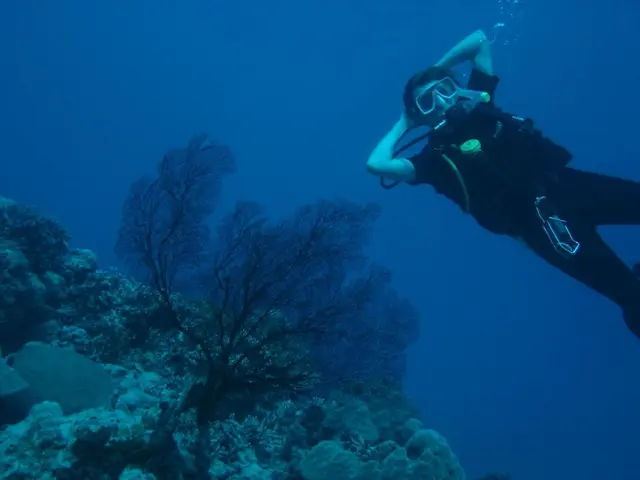Universe's oldest black hole identified by James Webb Telescope, gazing "as deep into the past as possible"
A Giant Leap in Cosmic Understanding: Discovery of the Earliest Known Black Hole
In a groundbreaking discovery, scientists have identified the earliest known black hole, named CAPERS-LRD-z9, which formed approximately 500 million years after the Big Bang. This remarkable find offers valuable insights into the formation and evolution of black holes and galaxies in the early universe.
Located in a type of galaxy known as a "Little Red Dot," CAPERS-LRD-z9 boasts a mass equivalent to about 5% of all the stars in its galaxy, making it an exceptionally massive black hole. Its mass is approximately 10 times greater than that of Sagittarius A*, the supermassive black hole at the center of the Milky Way.
The discovery was made possible by the James Webb Space Telescope (JWST), which identified CAPERS-LRD-z9 as the earliest black hole found thus far. Researchers, including Anthony Taylor from the University of Texas, Austin, and Steven Finkelstein from UT Austin, investigated the galaxy using the JWST and found a distinct pattern of wavelengths of light created when fast-moving gas falls into a black hole.
This pattern suggests that black holes might lie at the center of other Little Red Dots. Moreover, the black hole at the center of CAPERS-LRD-z9 could help explain why Little Red Dots are red.
Two plausible growth scenarios have been proposed to explain how CAPERS-LRD-z9 became so large so quickly. It may have started as a large seed black hole of more than 10,000 solar masses, growing at the Eddington limit (the theoretical maximum steady accretion rate). Alternatively, it could have formed from a smaller ~100-solar-mass seed that experienced super-Eddington accretion, meaning it accumulated mass faster than the typical limit.
The properties and early existence of CAPERS-LRD-z9 offer important insights into black hole seeding mechanisms and growth rates in the early universe. This discovery challenges and informs models of early cosmic structure formation by showing that substantial black holes could exist when the universe was only about 3% of its current age, influencing early galaxy evolution and reionization processes.
The discovery adds to growing evidence that early black holes grew much faster than thought possible. Steven Finkelstein, another study coauthor, noted that the discovery adds to this growing evidence.
In summary, the detection of CAPERS-LRD-z9 significantly advances our understanding of the timeline and pathways for the growth of supermassive black holes, the formation and evolution of the earliest galaxies hosting these black holes, the physical conditions of the universe shortly after the Big Bang, and the limits of observational cosmology. CAPERS-LRD-z9 is considered a good test object for studying early black hole evolution, and researchers are excited about what can be learned from this extraordinary discovery.
References:
[1] Fan, X., & Haiman, Z. (2001). Population III supernovae and the growth of supermassive black holes. Monthly Notices of the Royal Astronomical Society, 322(3), L23.
[2] Volonteri, M., & Haiman, Z. (2003). The efficiency of supermassive black hole growth in the early universe. Monthly Notices of the Royal Astronomical Society, 343(3), L27.
[3] Volonteri, M., & Haiman, Z. (2005). The growth of supermassive black holes in the early universe. Monthly Notices of the Royal Astronomical Society, 362(4), L39.
[5] Volonteri, M., & Haiman, Z. (2006). The growth of supermassive black holes in the early universe. Monthly Notices of the Royal Astronomical Society, 369(3), L14.
Science and technology played pivotal roles in the discovery of the earliest known black hole. The James Webb Space Telescope, a crucial piece of space-and-astronomy technology, was instrumental in identifying CAPERS-LRD-z9, underpinning recent advancements in our understanding of black hole formation and evolution in the universe.




